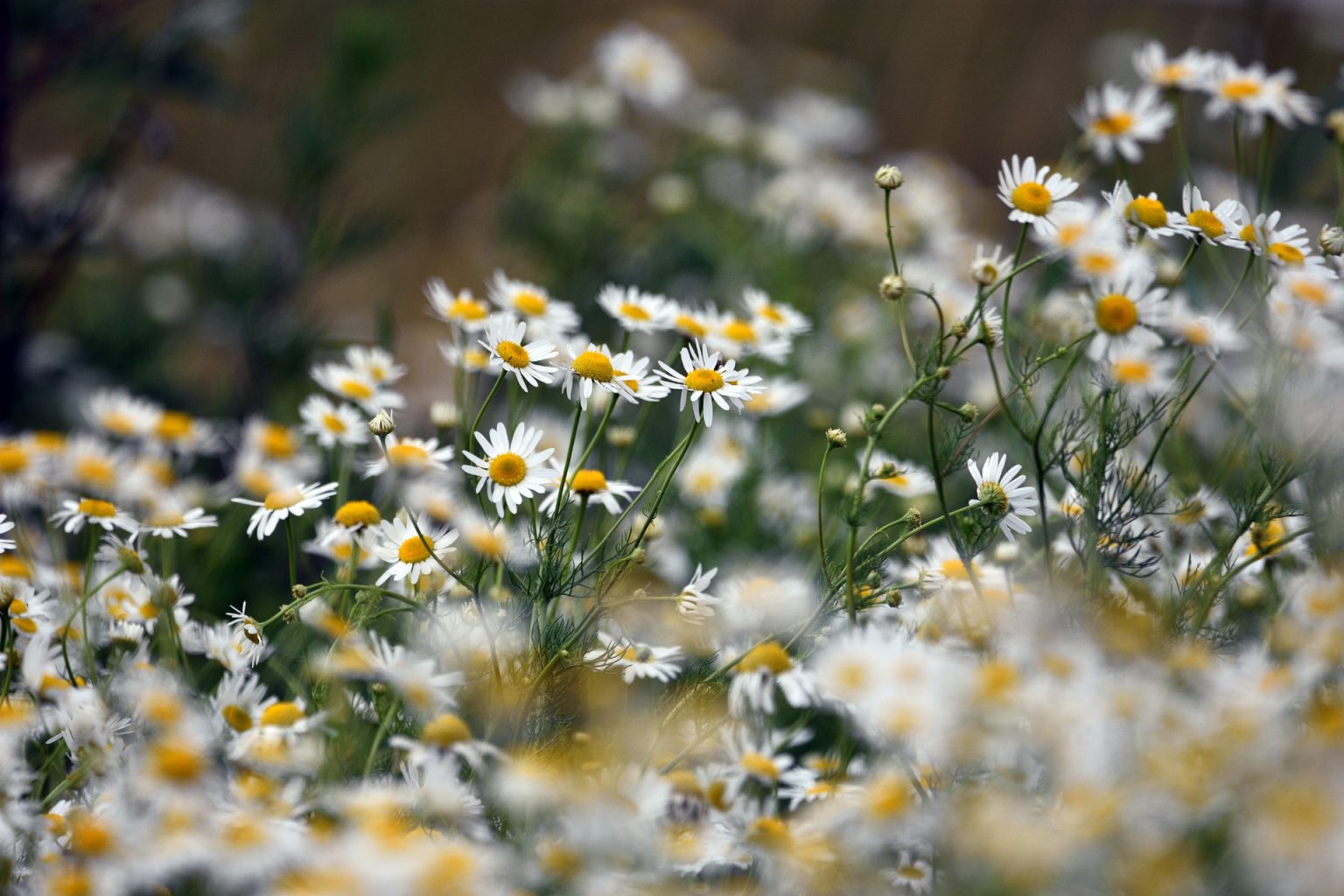
How would it be to live with Chamomile?
The name Chamomile comes from the Greek “khamaimēlon,” which translates to “earth apple”. With its pleasing fragrance and delicate beauty, Chamomile is a delightful addition to any home, patio or garden as an herb or ornamental.
Known for centuries for its healing properties, the Chamomile plant isn’t an overwhelming presence – but the dainty daisy-like flowers carry a glow of happiness – humble and elegant to grace any space.
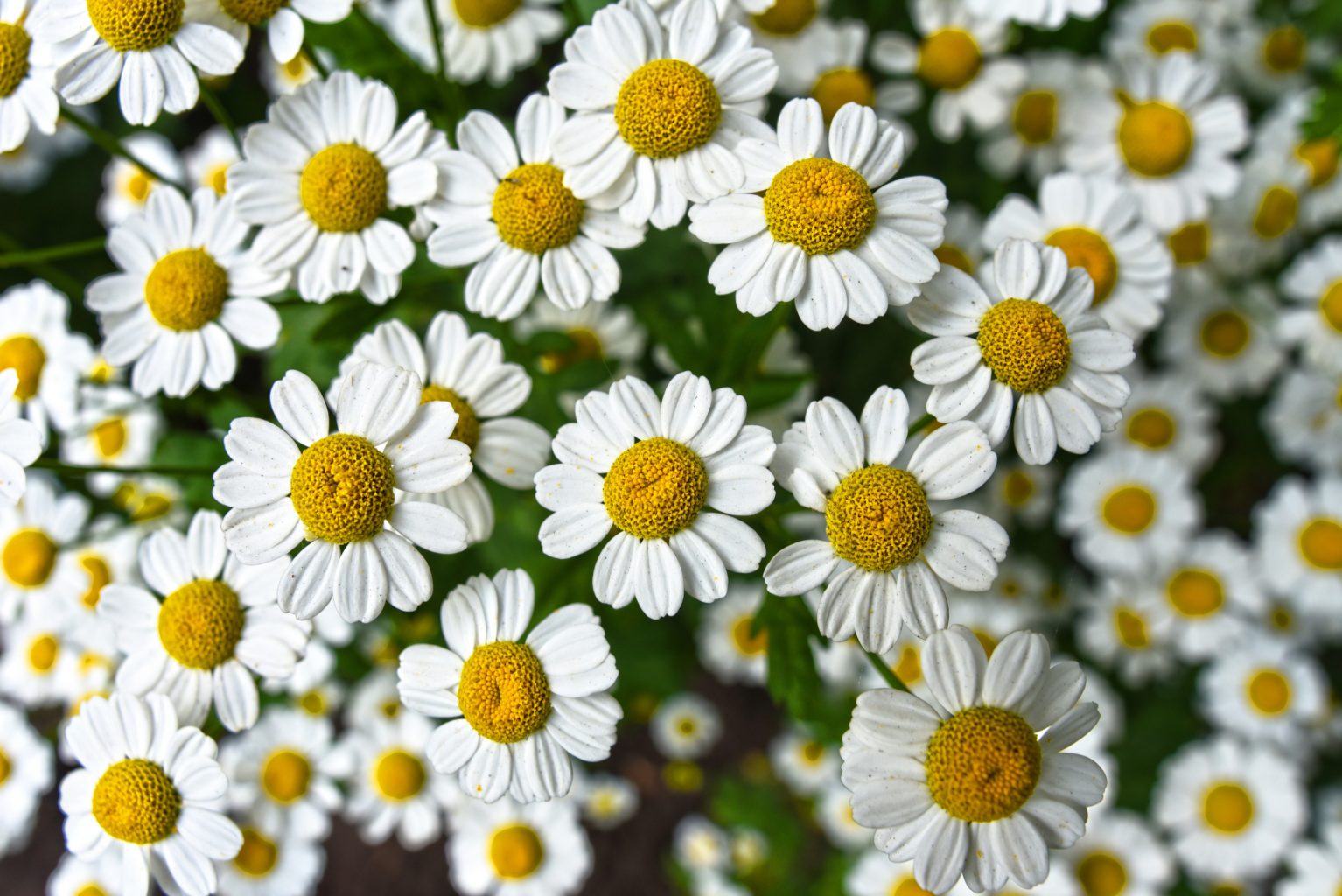
A little background….
Although there many species, the Chamomiles we are most familiar with come from two genus of the Asteraceae family, each with distinctive differences. One called Roman Chamomile (Chamaemelum nobile) and the other German Chamomile (Matricaria recutita).
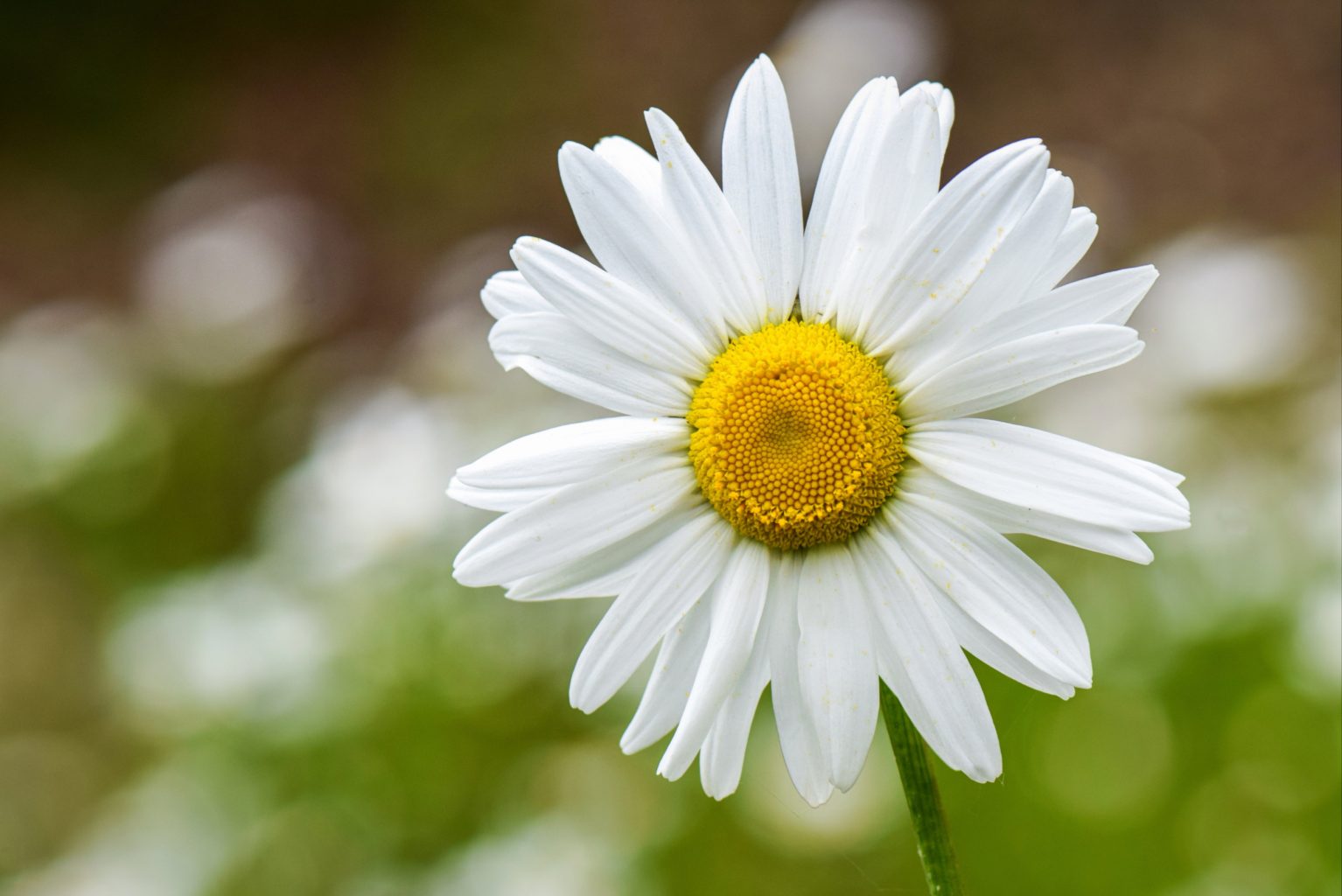
Roman (English, Common or Garden) Chamomile (image above) is a perennial originating in the hardy zones of western Europe. It grows lower than the German variety, tending to creep along the ground with short-stemmed flowers and solid yellow centers. The foliage is fine and feathery with hairy single stems.
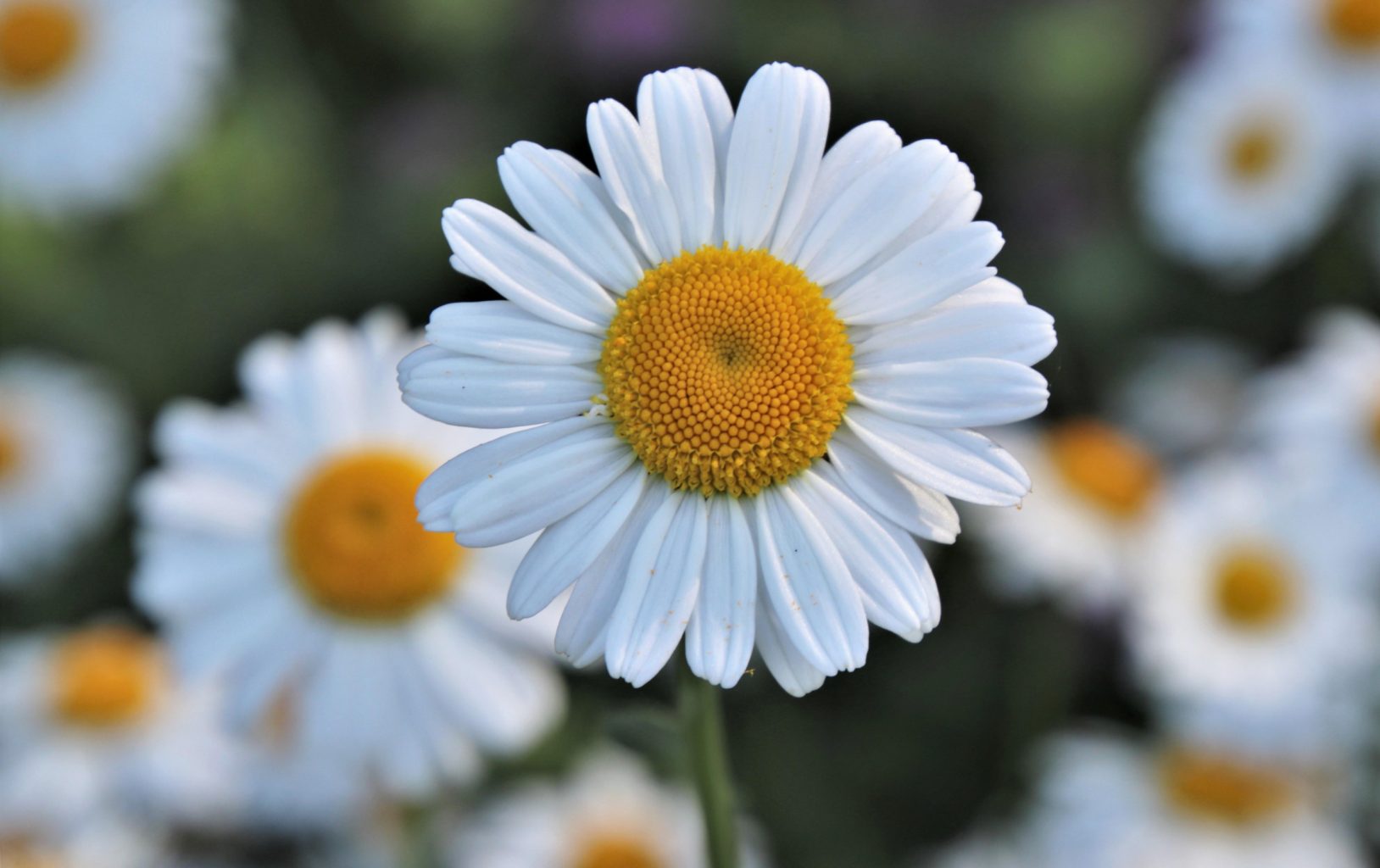
German Chamomile (image above) is an annual and can be self-seeding when planted outside in the right conditions. It grows up to 3 feet high and needs more room to spread out. The flowers are taller than the Roman variety and have hollow yellow centers. Although the foliage is also fern-like, the stems branch off with multiple blooms.
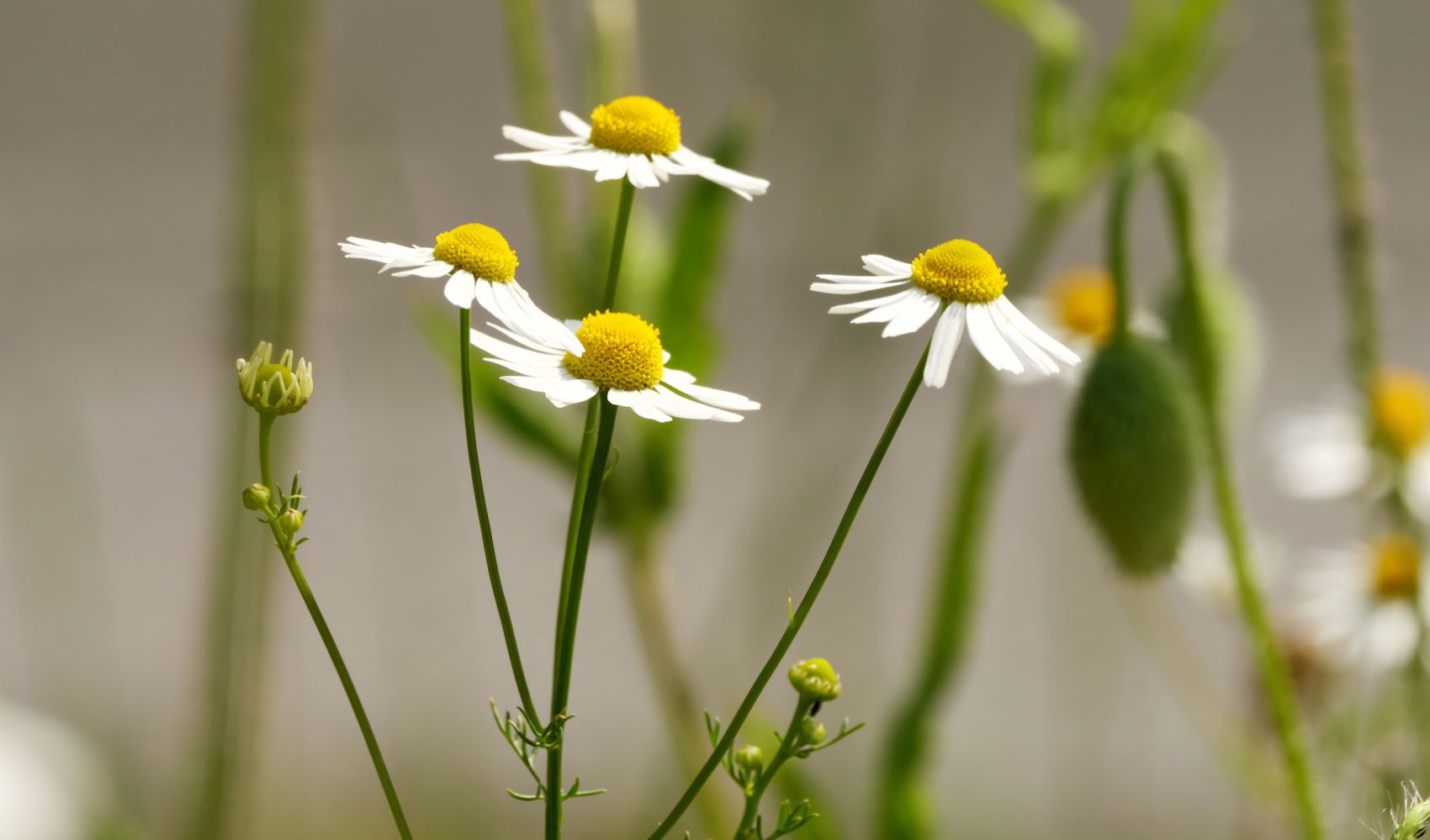
Growing Chamomile Indoors:
Although both types of Chamomiles can be grown in containers indoors, some say Roman tends to adapt better to the indoors because it is more compact and requires less room – but other authors disagree and contend the German variety is better suited for growing indoors and can be started from seed gathered from the previous year. Maybe you want to try both?
If you plant Chamomile seeds, make sure the pot has drainage holes and you use an organic potting soil, which you’ve soaked and drained. The seeds are tiny and hard to separate so don’t worry about planting them too thickly – they may be thinned later. Just press the seeds into the soil so they are just not quite covered.
Two important factors are: a temperature of at least 68 degrees and a window (or growing light) to provide at least 6 hours of sun each day. Misting the soil with a spray bottle each day will give them enough moisture without overdoing it. In a couple of weeks, you should have sprouts which you can thin to about 8 inches apart when they are about 3 inches tall.
Once your Chamomile plant is established, water them when the top of the soil is dry – about once a week. Chamomile doesn’t like to be soggy and doesn’t care for being fertilized. You may consider planting a few containers a few weeks apart if you want to harvest the blossoms for an extended time.
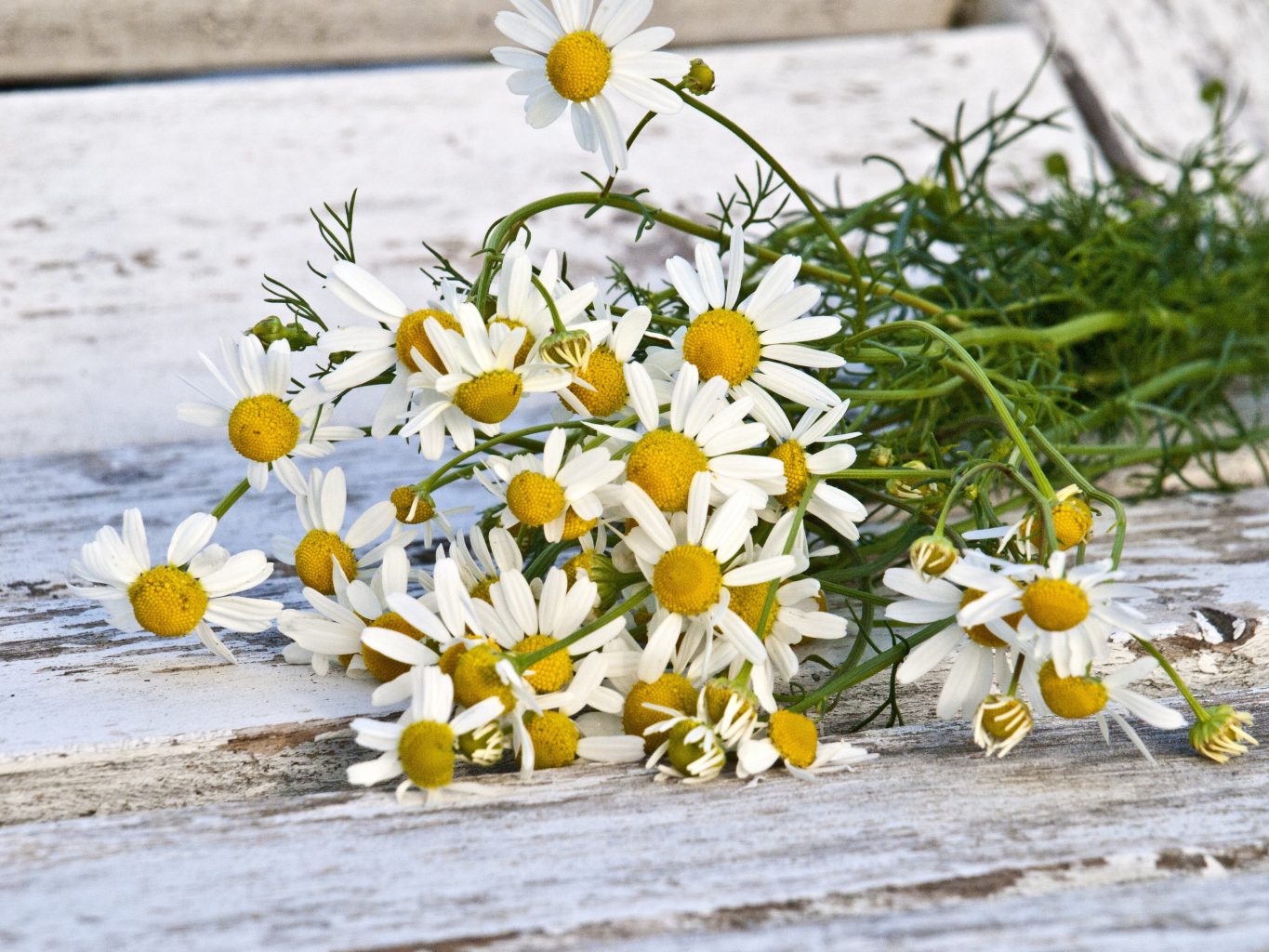
Harvesting Chamomile:
The suggested time for an outdoor harvest is in the morning, once the dew has dried on the plants but before the heat of a midday sun. The leaves, stems and roots of Chamomile are not used because they lend a bitter taste, especially if you are harvesting for tea.
The blossoms are ready for harvest when the flower petals have fully spread out. Just pinch off the flower head. This can be an ongoing activity for the blossoming season because the flowers will grow if you continue harvesting them.
Chamomile flowers can be washed in a basin of water, drained and gently patted dry if needed. Then they can be dried just in the air, in a low- temperature oven or in a dehydrator at the lowest setting. Do not crush the flowers until they are ready for use for best flavor. Once they are thoroughly dry, pop them in an airtight container away from light for storage.
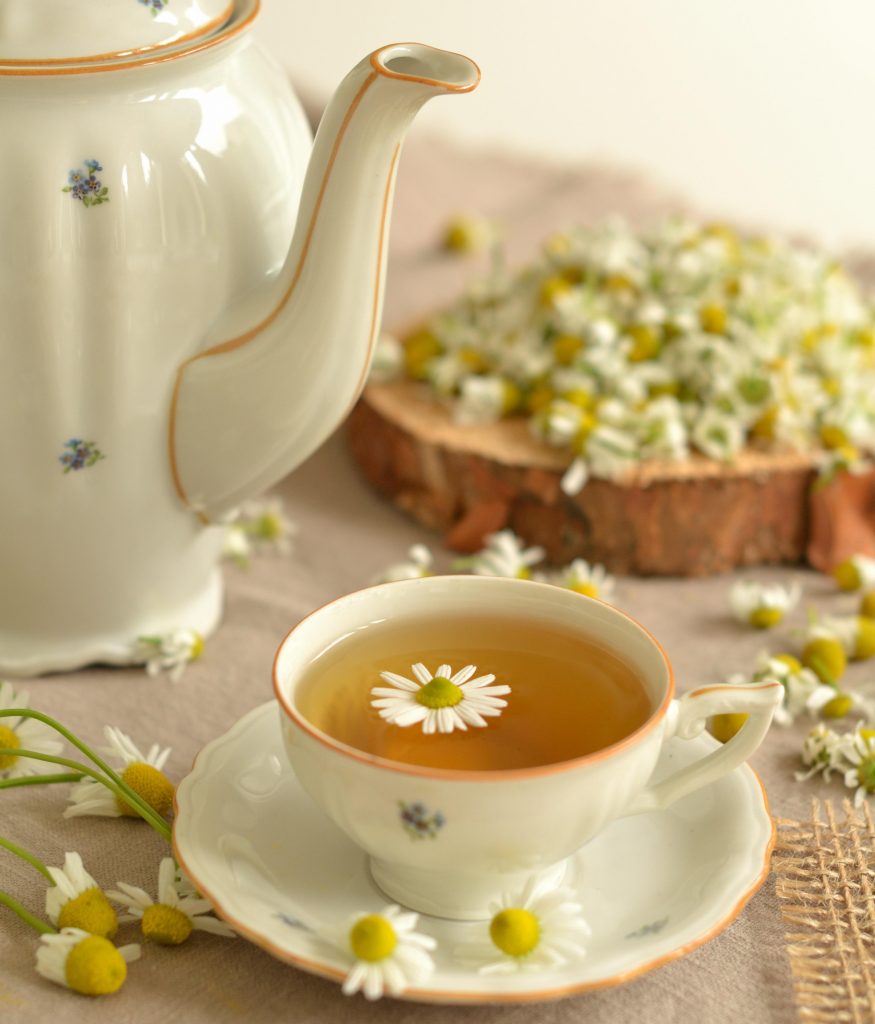
How to use Chamomile:
Making chamomile tea is simple – you can use the flowers when they are fresh or dried. Some suggested guidelines: crush 2-3 tsp. of the dried flowers into boiling water and steep for about 2-3 minutes before removing them. If using fresh blossoms, use about 6 – 8 tsp. per 1 cup of boiling water and steep for 2 – 5 minutes. You don’t want to leave them in the water for too long because the taste will be bitter.
A garden spray can be made by boiling 4 cups of water and adding the equivalent of 4 chamomile tea bags. Once the brew has steeped for 24 hours, retain the liquid for use as a spray to keep insects away.
Some wonderful innovators have found a way to include Chamomile’s subtle floral flavor into baked goods such as cakes, cookies, custards and scones. The way to do this is to infuse the Chamomile flowers as follows. Choose a base baking ingredient such as whatever cream, butter or milk the recipe calls for. Then gently heat that ingredient and add a generous pinch of dried chamomile flowers. Remove from heat and let the mixture steep for 10-15 minutes. Once it is steeped, use a cheesecloth or fine mesh strainer to strain the flowers out before continuing as usual with your recipe. Chamomile pairs well with vanilla, lemon, almond and honey.
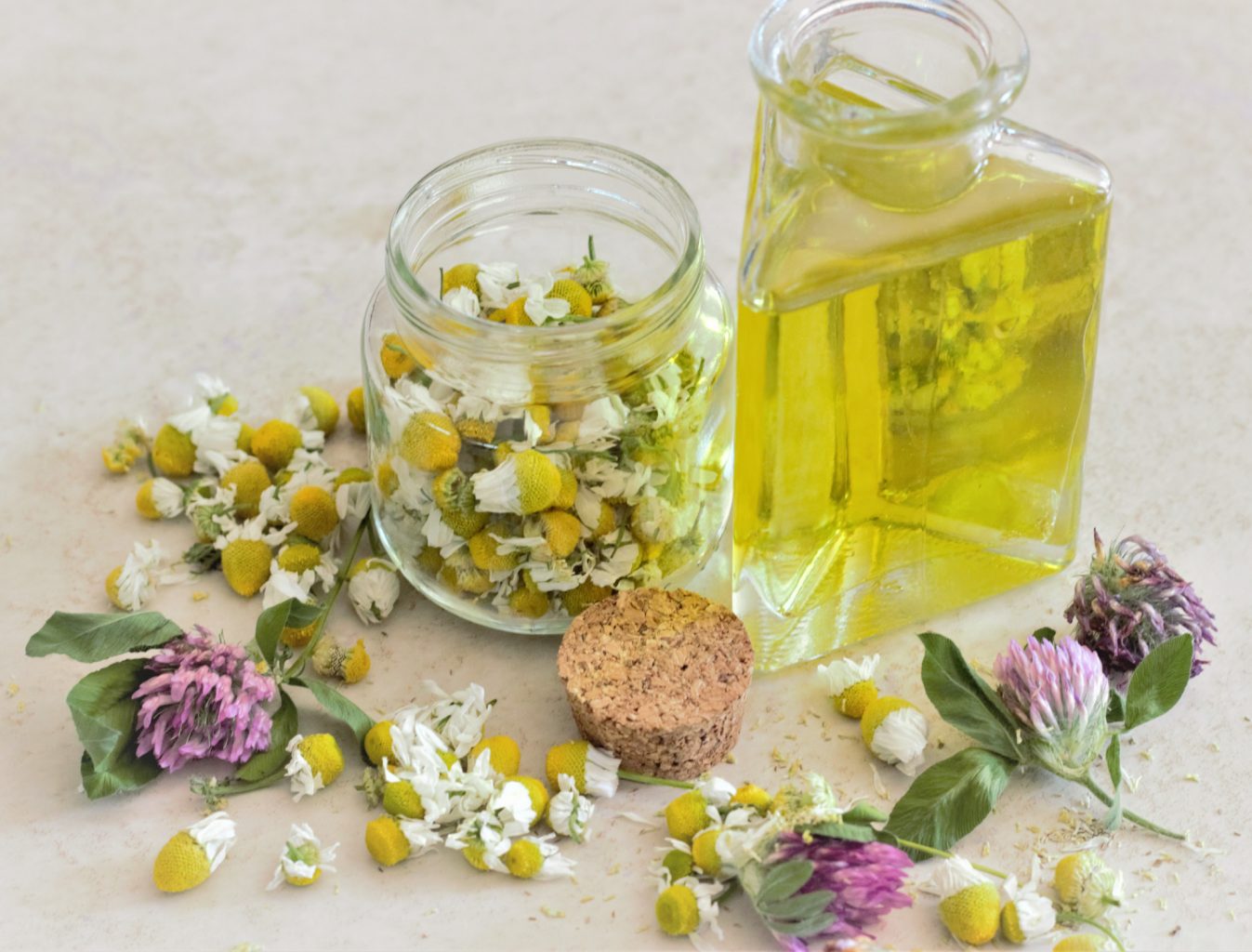
For those with blonde hair it is recommended to boil 70 grams of Chamomile flowers in a liter of water and use it as a rinsing water after shampooing. Chamomile is also lovely for use in a potpourri.
The ancient Egyptians dedicated Chamomile to their gods due to their belief that it cured fevers. You can purchase or make your own Chamomile hydrosols (water-based products made from the distillation of fresh flowers, leaves, fruits, and other plant materials). Research shows that German chamomile may have some anti-inflammatory properties that soothe burns or allergic rashes.
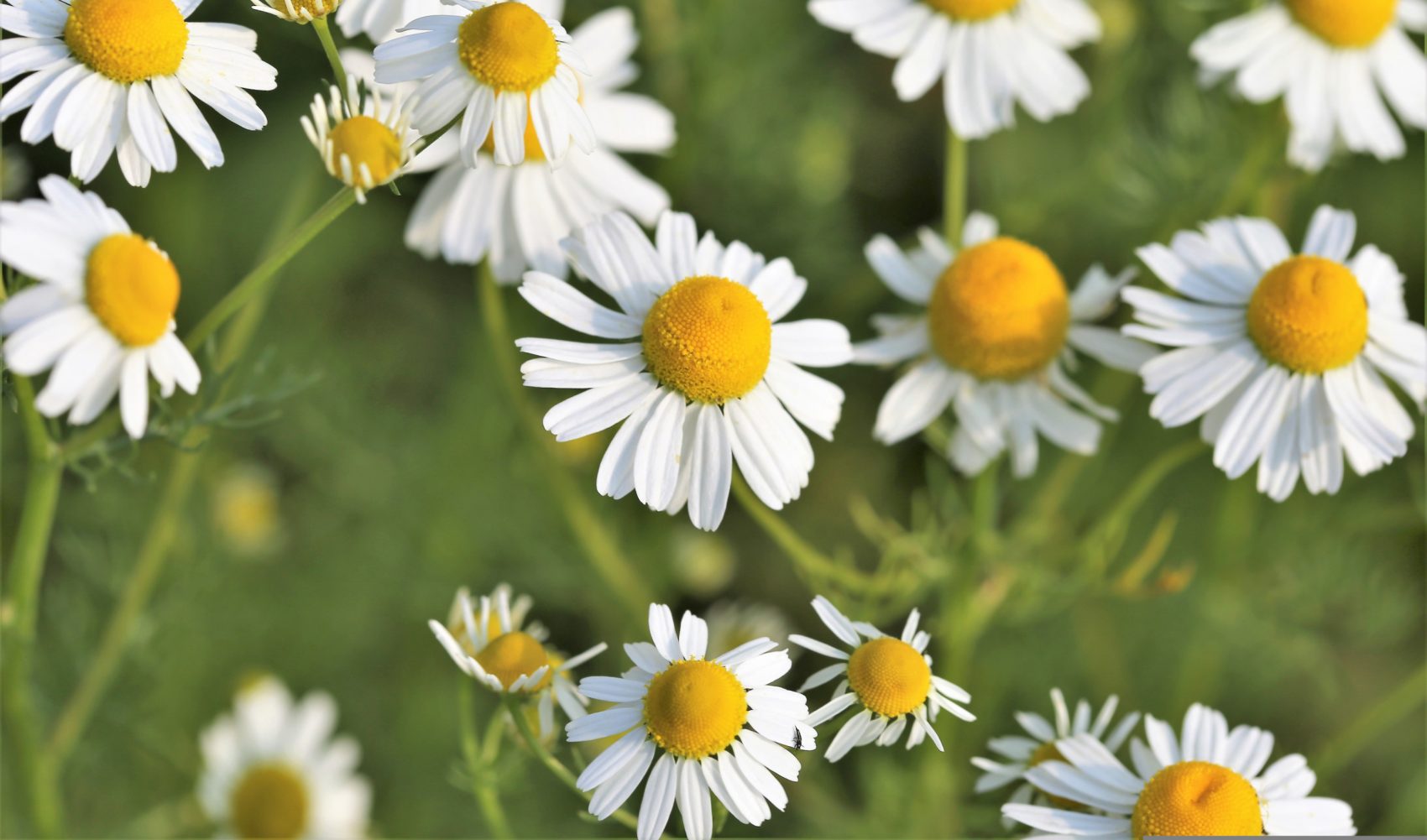
The incredibly soothing properties of Chamomile are still being explored today in herbal, medicinal and culinary ventures. It has been noted by gardeners that planting Chamomile next to ailing plants would assist that plant – perhaps because Chamomile tends to repel insects? Whether due to its fragrance, ability to induce relaxation or its flavor profile, Chamomile’s use has and continues to please many cultures and continents.
It isn’t surprising that Chamomile is linked with the sun gods and masculine energy such as Ra and Helios, among others. The heads of the flowers resemble little suns! Chamomile is also associated with the element of water, which also makes sense because water is said to represent emotions, which Chamomile is famous for being able to calm and soothe.
The Chamomiles have shared their unique floral sweetness, natural calming properties and unobtrusive, elegant presence with humanity long before recorded history. It is our hope you will feel inspired to dip into the world of Chamomile!
